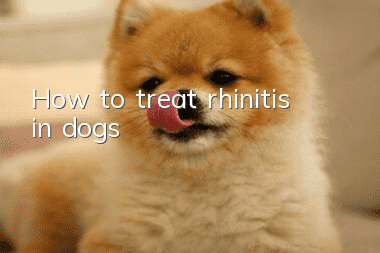How to raise Tibetan Mastiffs in winter and precautions for postpartum care

Tibetan mastiff, also known as Tibetan dog, Tibetan dog, and Qiang dog, is native to the Qinghai-Tibet Plateau in China. It is a tall, fierce, lop-eared, short-haired domestic dog. The body length is about 130 centimeters. The coat is long and thick. It is cold-resistant and can sleep peacefully in ice and snow. He has a resolute character, strong strength and ferocious nature, and his wild nature still exists, making him intimidating. It protects territory and food, is good at attacking, is strongly hostile to strangers, but is extremely affectionate to its owner. It is an effective assistant in looking after homes and homes, herding horses and sheep.
Feeding
1. In the low-temperature environment in winter, Tibetan Mastiffs have a strong appetite and a large increase in food intake. The focus of feeding and management is first to ensure that they can obtain sufficient food, so that the dog can eat well. In captivity, it is strictly forbidden to feed Tibetan Mastiffs raw, cold, or moldy food. Attention should be paid to water supplementation. Tibetan Mastiffs tend to drink more water when the weather gets colder. With sufficient drinking water, they can maintain normal metabolic levels in the body and generate enough heat to withstand the severe cold. After the feed is prepared, feed it when the food temperature is appropriate. It is best to feed hot food, which will not cause stomachache or feel cold, and is beneficial to maintaining the health of the dog. Dogs should be allowed to move outside the circle as much as possible to get more sun and enhance their physical fitness. Bedding should be laid in the kennel, or a wooden board should be laid in the dog pen to prevent the Tibetan Mastiff from lying directly on the cold ground at night.
Nursing care
In addition, the bitch who is about to give birth must do a good job in delivery, midwifery and postpartum care of the bitch. Let the female dog regain her strength as soon as possible and breastfeed normally to ensure the good growth of the newborn puppies. Especially in the first few days after delivery, it is necessary to observe whether the mother dog has postpartum infection and whether the pups are normal, and make every effort to ensure the survival of the newborn pups, and deal with any problems in a timely manner. In order to nip the disease in the bud, each female dog was given intramuscular injections of 1.6 million units of penicillin twice a day, morning and evening, from the day she gave birth to prevent postpartum infection. Due to the weak constitution of the female dog, intensive care must be taken within 3 to 5 days after giving birth. Hard, greasy and cold food should not be fed, especially the animal bones that the female dog usually likes to eat. For primiparous bitches, in order to assist in smooth delivery, the bitch should be approached as soon as the due date is approaching. Comb the abdominal hair of the female dog and wipe the vulva so that the female dog can fully trust the owner and will not be frightened or attacked by the owner's excessive approach during delivery. The midwife must be bold and careful, paying attention to the mother dog's expression and reaction, and promptly handling each newborn puppy and returning it to the mother dog's arms immediately to eliminate the mother dog's fear and suspicion.
2. Check whether there is milk after delivery and whether the mother dog's body temperature is normal. After confirming that everything is normal, the focus of care can be shifted to the care of the newborn pups. According to statistics, the mortality rate of newborn puppies from a primiparous female dog within 3 days after delivery can reach 70% to 100% of the total mortality rate of the puppies. Therefore, the female dog can hardly leave the caregiver within 3 days after delivery. They can be on duty in turns and pay attention to whether the puppies are safe at all times. The main tasks of the caregivers are: frequently change the bedding, keep the birthing den dry, confirm that the temperature in the birthing den is appropriate, and the mother and baby are safe; each puppy eatsColostrum and normal development; prevent the puppies from being pressed under the abdomen or behind the mother dog, and pay special attention to the safety of the puppies when the mother dog lies down again after getting up. After 3 days, the pups will have the ability and strength to crawl and move, and the mother dog will gradually be able to nurse the pups on her own, thus greatly improving the safety of the pups.
Notes
Tibetan Mastiff is a primitive and ancient local dog breed. Many people believe that Tibetan Mastiff is actually still in a domesticated and semi-wild state. Therefore, when the female dog is giving birth, the surrounding environment is required to be absolutely quiet, without any noise and interference from outside the site. The breeding farm must refuse all visits and browsing during the Tibetan Mastiff breeding period. This measure is of great significance to ensure the survival of puppies and improve their survival rate.
- Common skin diseases in Alaska
- What should I do if my dog keeps having diarrhea? Internal deworming is the key!
- Why does the puppy keep twitching?
- Is the Basenji dog easy to raise? Is the IQ high? How much does a Basenji dog cost?
- Dog is vomiting and lacks energy
- Home renovation tips for planning a pet!
- Novice Class | Brief Analysis of Dog Purchasing Sources
- How to train a dog to go to the toilet
- Puppy stays up in the middle of the night and whines
- Things to note when wearing dog collars



